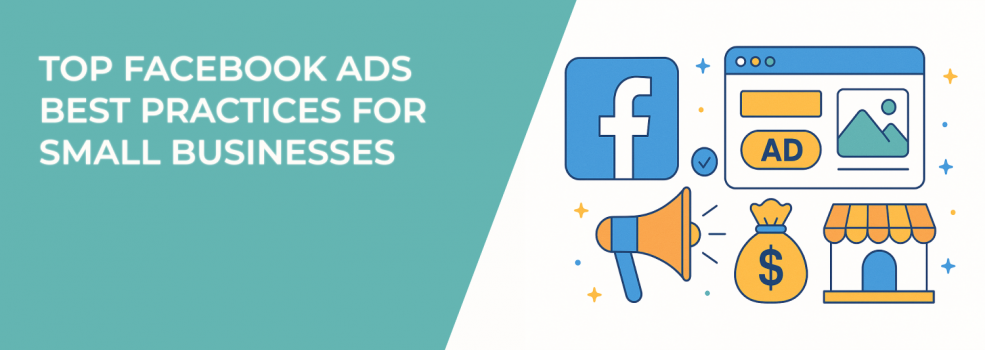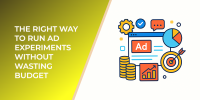Facebook advertising can feel like a black box — especially when you’re a small business with limited time, budget, and people. You’re not managing million-dollar ad accounts. You’re managing customer service in the morning, creative in the afternoon, and worrying about revenue all day.
So you need more than generic advice.
You need real, repeatable tactics tailored for small teams with big goals. This guide lays out expert-level Facebook ad practices designed specifically for small businesses — with a focus on precision, not scale.
1. Build Audiences That Reflect Real Buyer Behavior
When you don’t have a large brand or big budget, audience quality matters more than audience size.
This is where small businesses have a unique edge: you can build tighter, more behaviorally informed audiences by starting with people who are already showing signs of purchase intent — not just interest.
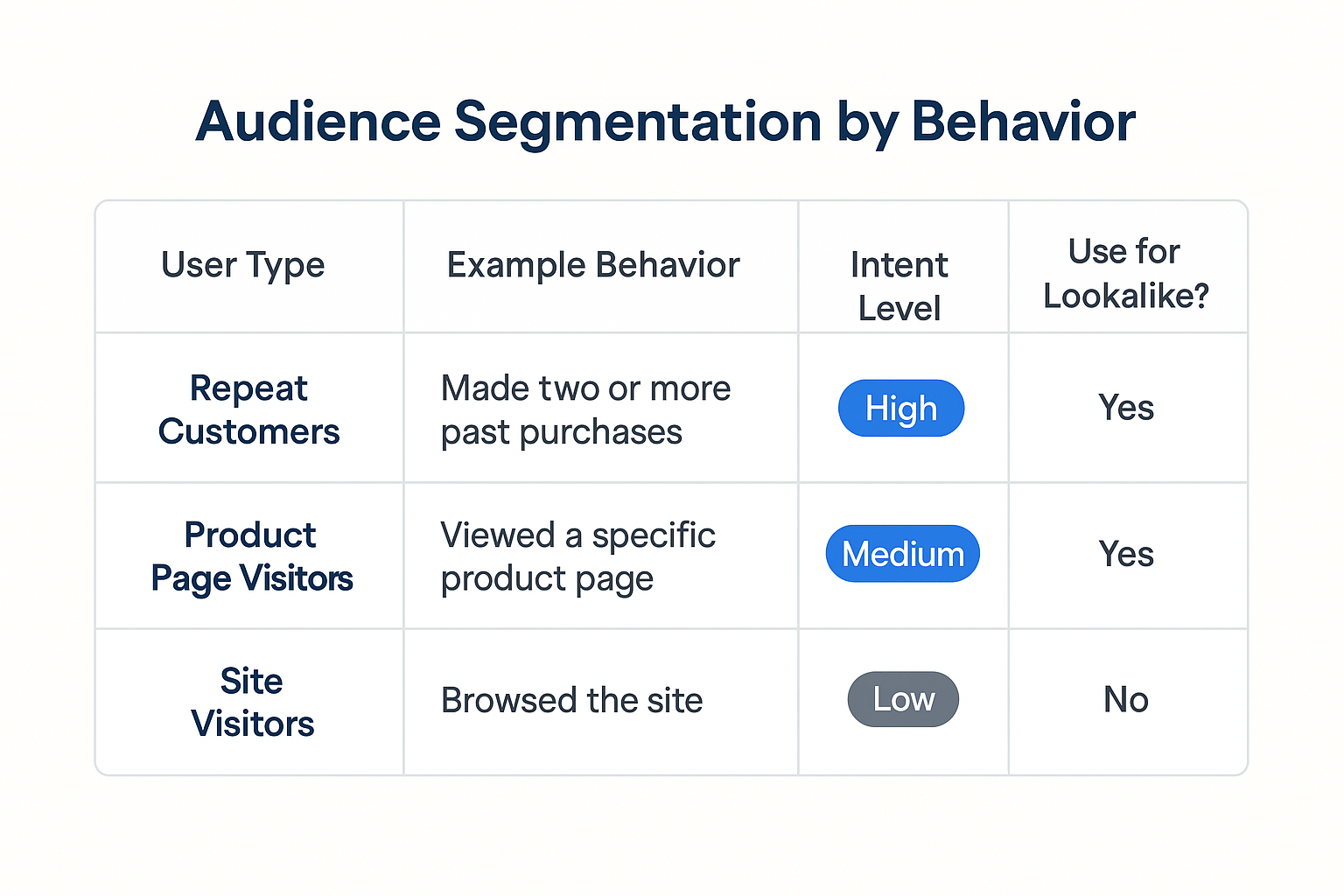
Here’s what that looks like in practice:
-
Start with a custom audience of repeat customers, not just site visitors. Use frequency filters (e.g. 2+ purchases or multiple high-value pageviews) to isolate serious buyers.
-
Segment by on-site behavior: for example, users who reached the checkout page but didn’t complete, or viewed high-margin product pages.
These types of behaviorally-aligned audiences give you a strategic targeting advantage that bigger advertisers often overlook. To understand how to identify the right audiences step-by-step, read How to Define a Target Audience for Marketing.
2. Use Lookalikes Correctly — With a Strategic Seed
Most small businesses use lookalike audiences too early or seed them with low-quality data. This leads to wasted spend and underperformance.
Here’s how to do it right:
-
Segment your best customers first. Use total spend, order count, or retention as your filter. Don’t just export all Shopify customers — export only the top 10–20% based on lifetime value.
-
Create lookalike audiences from these high-value segments. It may be smaller, but the algorithm can work more effectively with cleaner signal.
-
Better yet, use LeadEnforce to build a high-quality seed from niche group members. For example, if you're selling accounting software, groups like “Freelance Bookkeepers” or “CPA Marketing Hub” are ideal. These users are already qualified — your job is simply to show them something relevant.
For a deeper look at how to use this tactic strategically, check out Custom vs Lookalike Audiences: What Works Best for Facebook Campaigns.
3. Align Offer Type With Funnel Stage (And Budget Reality)
Many small businesses jump straight to selling the product — often because they need cash flow now. But this usually leads to inefficient ad spend, especially with cold audiences.
Instead, structure your campaigns around the three key funnel stages, and make sure your offer matches the audience’s level of awareness.
-
Top of Funnel (Cold): Focus on education or awareness. Run video content or blog posts promoting your unique angle. If you're a local bakery, this might be a “behind the scenes” reel showing how your pastries are made daily, fresh.
-
Middle of Funnel (Warm): Offer low-friction conversions — email signup for recipes, downloadable guides, or quizzes. A small skincare brand might run a skin-type quiz that leads to a customized routine recommendation.
-
Bottom of Funnel (Hot): Now you can pitch the product, show testimonials, offer discounts, and create urgency.
If your budget is limited, shift more spend toward middle and bottom-of-funnel campaigns where conversions are likelier. For more ideas on how to structure these stages, explore Facebook Ads Funnel Strategy: From Audience Identification to Conversion.
4. Stop Relying on Interests — Use Community-Based Segments
One of the most powerful — and underused — strategies for small businesses is to target based on affinity groups, not interests.
Interest-based targeting is broad, and often misleading. Someone “interested in marketing” might be a college student — not a decision-maker.
LeadEnforce lets you build Facebook audiences based on actual Facebook group or Instagram account followers — a far more reliable indicator of real interests and active participation.
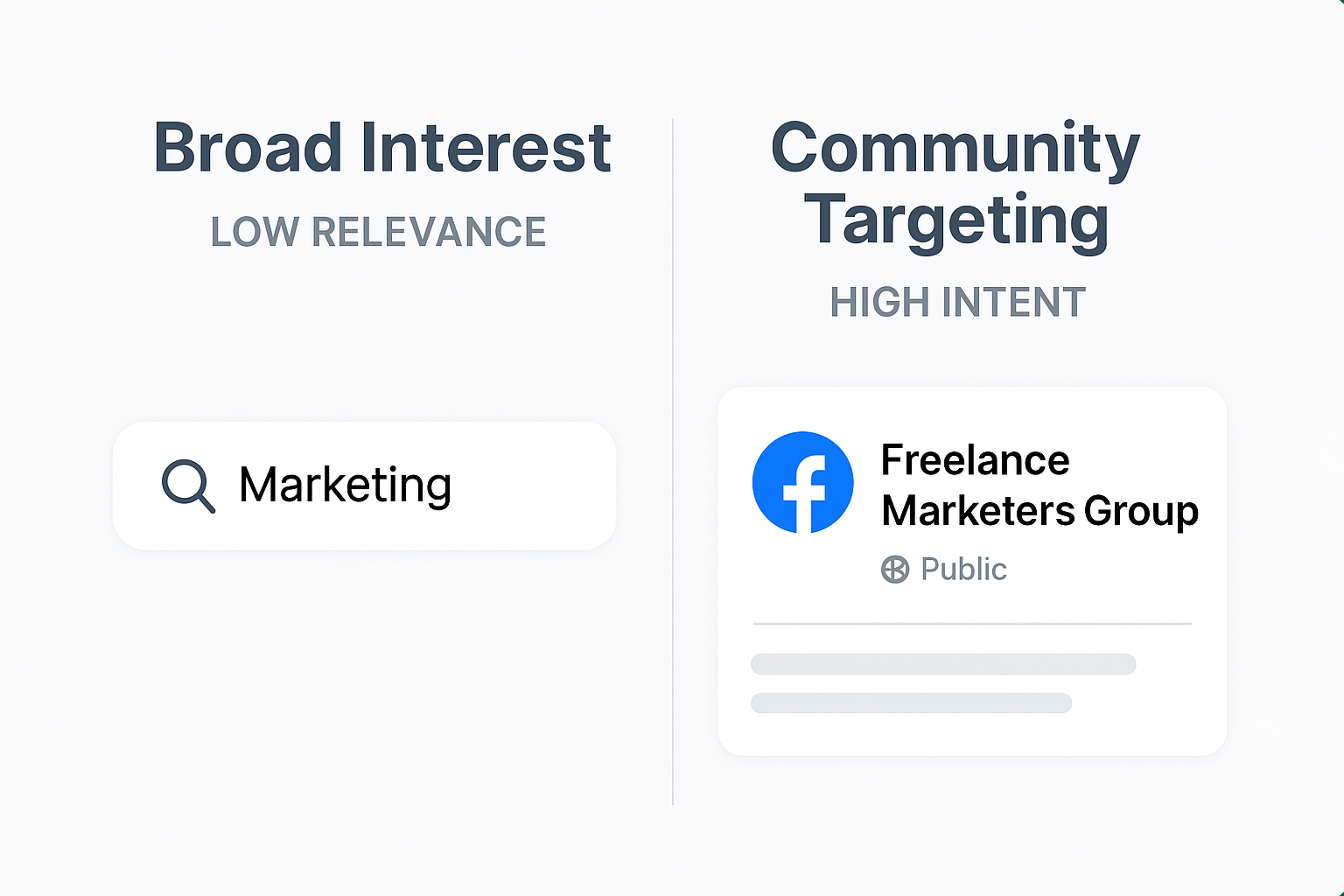
Example scenarios:
-
A craft tools seller targets “DIY Wedding Planners” and “Cricut Creators” Facebook groups, instead of generic “DIY” interests.
-
A small B2B software tool builds audiences from followers of competitors' Instagram accounts and converts them with demo offers.
-
A local gym segments audiences from Facebook groups like “Fitness Accountability - Atlanta” to keep their reach geo-relevant.
This method puts you in front of tighter, more qualified audiences who are already thinking about what you offer. Learn more about how to use these advanced segments in Facebook Ad Targeting 101: How to Reach the Right Audience.
5. Use Manual Placements — But Only When It Makes Sense
Automatic placements are fine when you’re just getting started. But if you want to optimize performance, especially on lower budgets, you’ll need to analyze which placements are actually converting — then adjust accordingly.
For small businesses, you’ll often see better returns by:
-
Prioritizing Facebook and Instagram Feeds for product-focused ads with visuals.
-
Using Stories and Reels only if your creative is built for vertical, fast-paced engagement.
-
Excluding placements that consistently underperform (such as Audience Network, unless you're running a broad awareness play).
Test each placement in isolation, using separate ad sets if needed, and shift spend toward what proves profitable. Don’t “set and forget.”
If you’re struggling to exit the learning phase while doing this, read How to Finish the Facebook Learning Phase Quickly.
6. Develop Messaging That Reflects Constraints and Context
Here’s a trap many small businesses fall into: they copy the tone of big brands — vague taglines, abstract benefits, generic slogans.
You’re not Nike. And that’s a good thing. Your messaging should reflect your reality and your customer’s problem, not vague lifestyle aspirations.
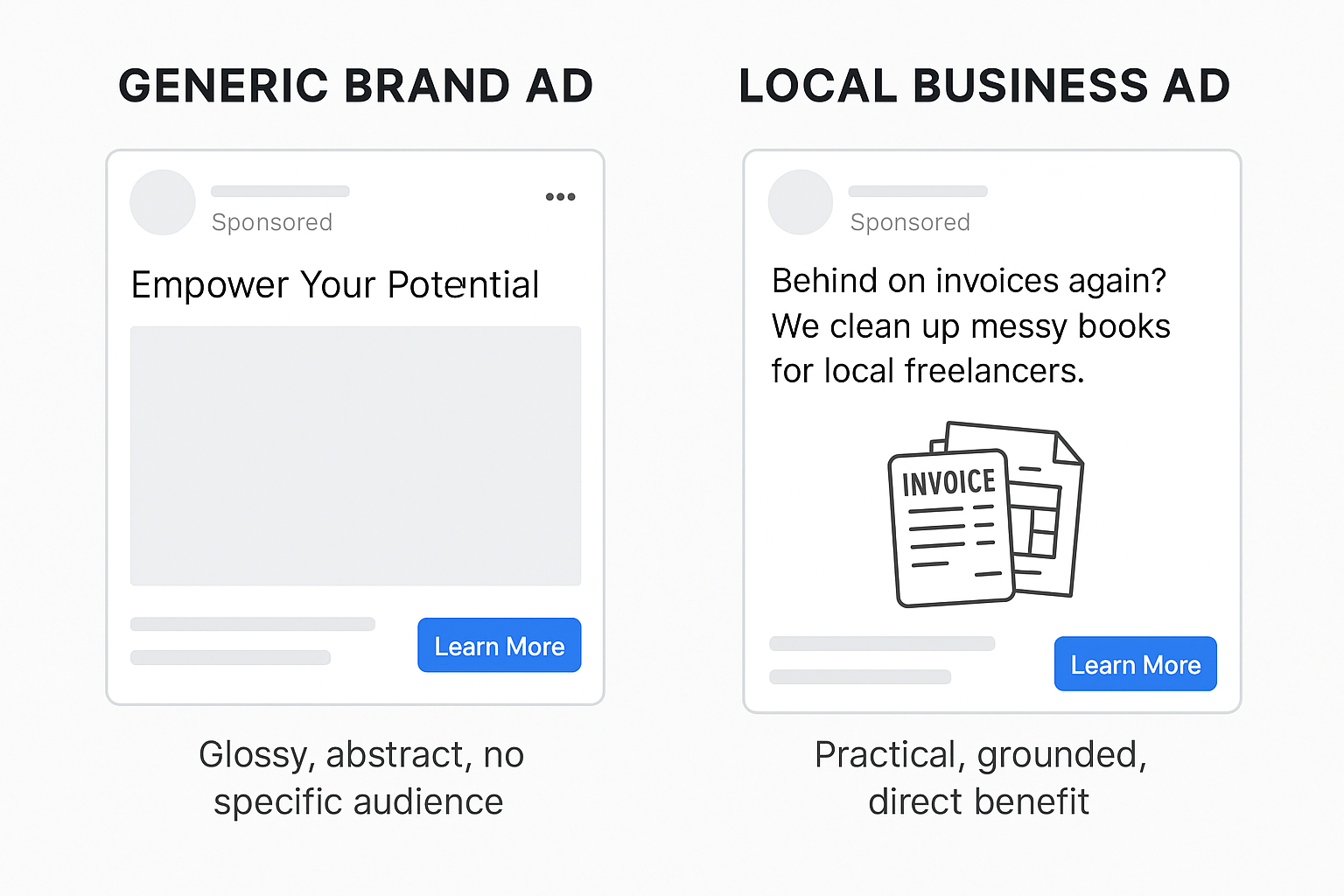
Instead, speak directly to the user's situation:
-
What’s their problem right now?
-
What’s stopping them from solving it?
-
Why are you uniquely qualified to help?
Example: A local bookkeeping service might run an ad that says:
“Behind on invoices again? We clean up messy books for local freelancers — without locking you into long-term contracts.”
This type of grounded, constraint-aware copy resonates more than polished slogans. You don’t need to be clever — you need to be clear.
If your ads still aren’t converting, revisit the fundamentals using Facebook Ads Not Converting: How to Fix It.
7. Track Real Profit — Not Just CTR or ROAS
Small businesses can’t afford to chase vanity metrics. You need to track campaigns based on profit, not just performance indicators.
Set up your reporting to focus on:
-
Cost per acquisition (CPA) vs. customer lifetime value (LTV).
-
Conversion value from different audience segments (e.g. LeadEnforce-based custom audiences vs. interest-based).
-
Profit margins after ad spend and discounts — not just ROAS.
Also, analyze which audience segments drive the most profitable customers. Often, the smallest audience (like a niche Facebook group) brings in the best returns — even if the CTR is lower.
Over time, use this data to prune underperforming audiences and double down on those that actually generate revenue.
Final Word
Facebook ads aren’t “dead” for small businesses. What’s dead is relying on generic interest targeting, broad messaging, and one-size-fits-all campaigns.
The good news? You don’t need a massive budget to succeed. You just need better segmentation, sharper copy, and a clearer understanding of how real people make buying decisions.
So if you’ve struggled with inconsistent results, high ad costs, or irrelevant traffic — you’re not alone. But now you know where to look, and how to improve.
